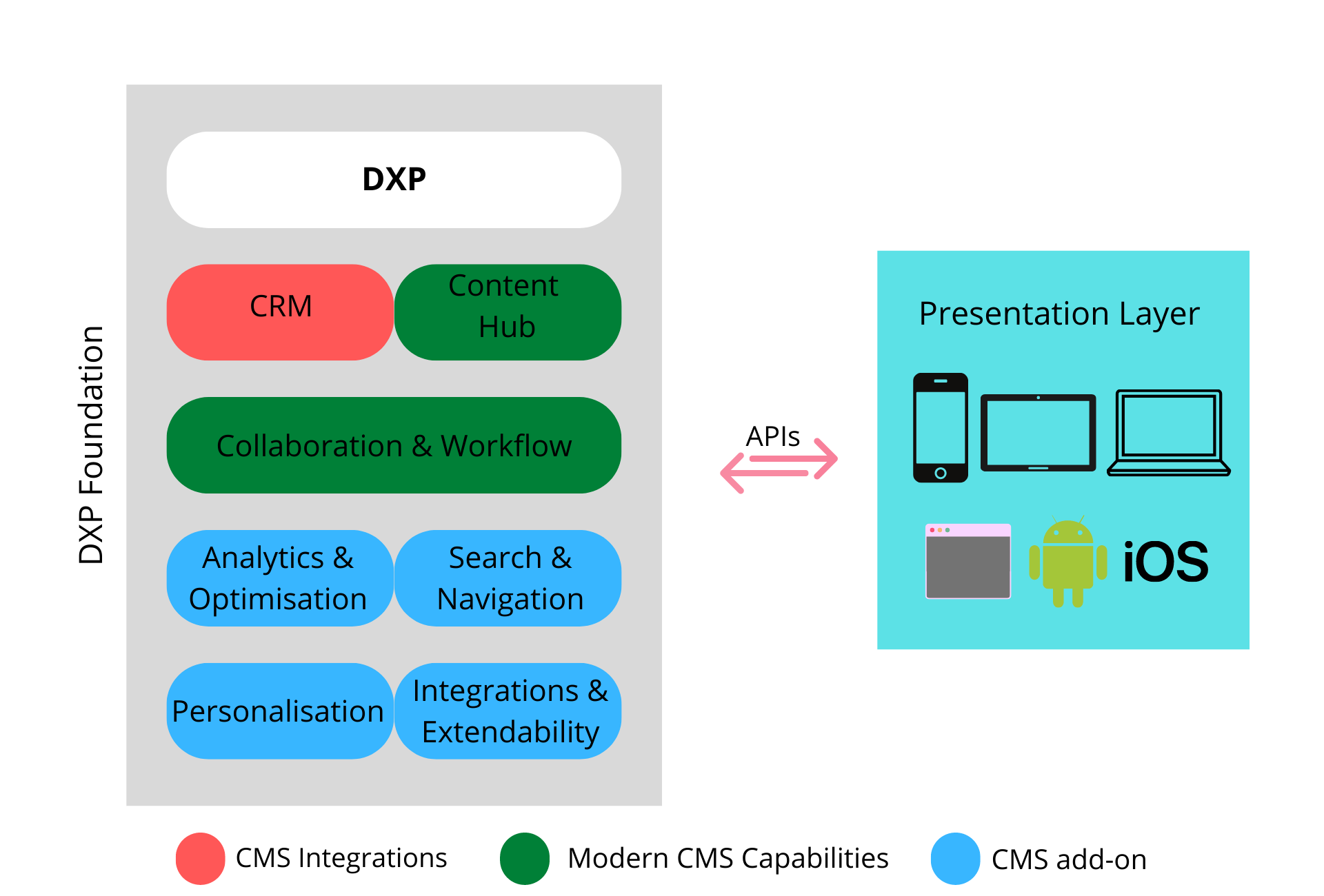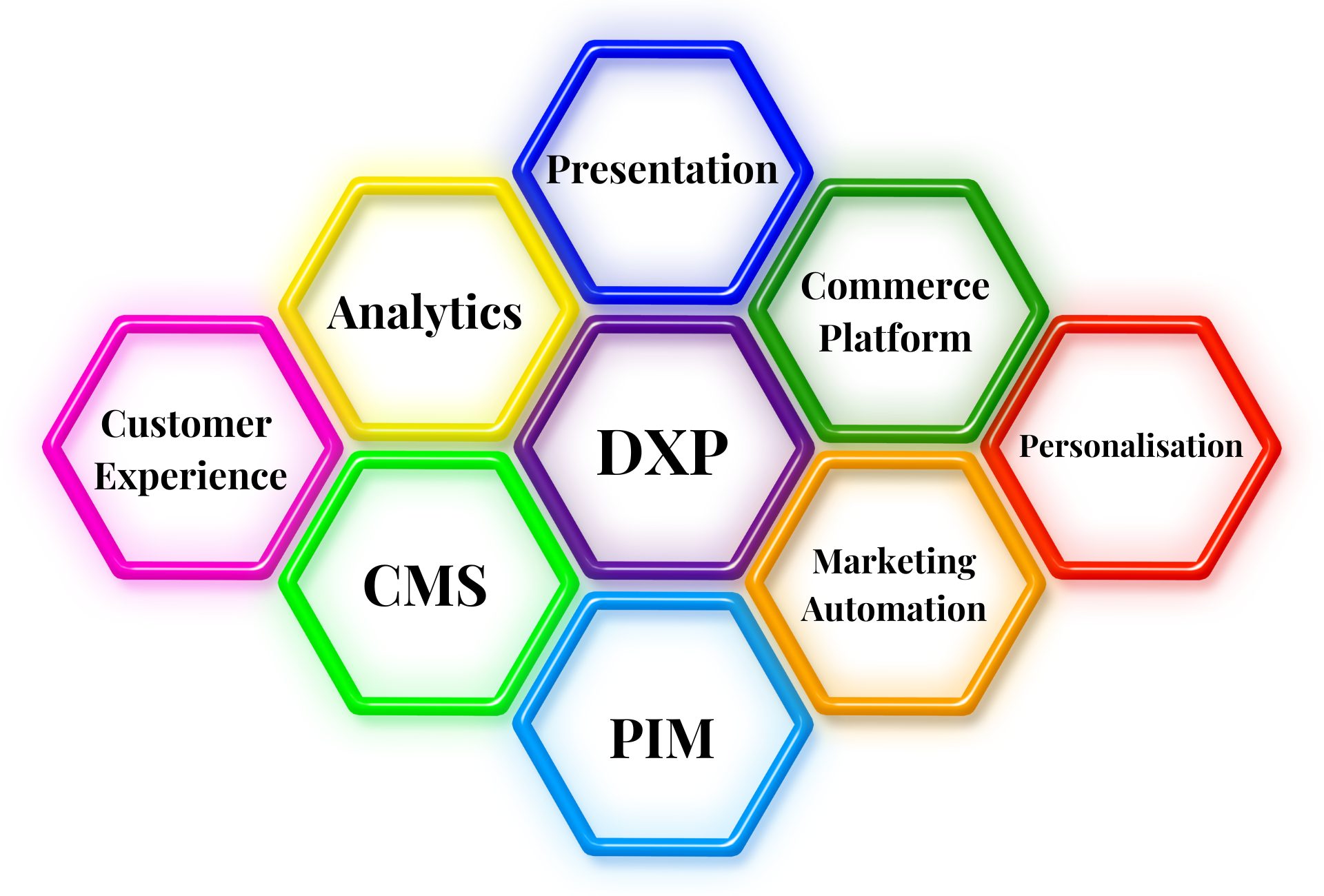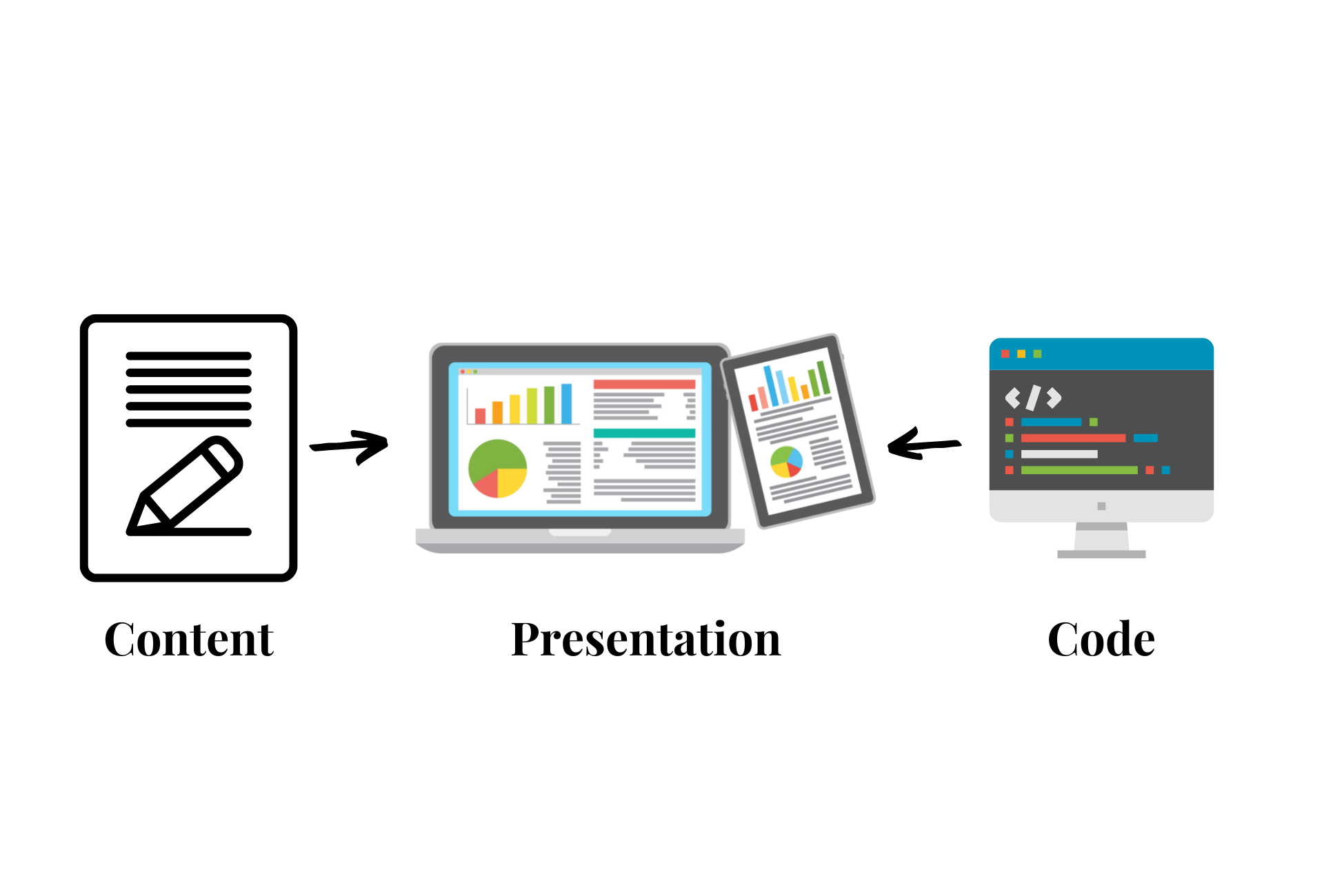Introduction
In 2018, research by Salesforce found that 76% of the customers today expect businesses and brands to understand their needs and expectations. And another repost says that 84% of the customers say the experience of interacting with the company is most important.
With the Internet, customers’ knowledge has grown, resulting in a situation where more than the product or the brand, customer experience matters the most. When a customer has a great experience with your business, they are most likely to come back to make a purchase again, and there are high chances they will influence their fellow audience to try your product/service.
But for this to happen, keeping the customer experience seamless and continuous across all the digital platforms is highly essential. And that’s where DXPs came into the picture.
Digital experience platforms help businesses with an integrated suite of tools, systems and software to foster meaningful relationships with their customers by listening, speaking and responding to them.
Understanding DXP
Garner defines DXP as “an integrated and cohesive piece of technology designed to enable the composition, management, delivery and optimisation of contextualised digital experiences across multi-experience customer journeys.”
Everything depends on quick and relatable communication in today’s digital world and digital lifestyle. DXP is a technology that encompasses many other business and marketing technologies and systems to create custom experiences informed by the data and lets the users experience it anywhere they look.
It can be a social media profile, e-commerce site or an email link to a website; users can access the consistent business content and can continue the customer journey through various digital sources.

For example, a user can check about a gadget on a gadget review page using their mobile and cross-check the descriptions and specifications on the company’s merchant website. Once they decide to buy the product, they might switch to a laptop and order the product via a third-party e-commerce website. Again they might choose a UPI payment mode and use their mobile to make the payment. On receiving and using the product, they can convey their feedback or enquire about doubts or clarifications through an email.
So a successful customer journey includes many technologies, systems and platforms. From the business end, apart from providing the customer experience, DXP helps in collecting leads from various sources like social media, websites, email, etc., building databases, marketing solutions, content management, customer data and analytics.
DXP has been a significant part of the Martech stack to deliver an enhanced customer experience. It helps marketers to deploy multiple tech tools to create and successfully run campaigns, get insights, and provide the best customer experiences.
Most DXPs have their native data and analytics tools or allow to integrate the third-party tools, that help with business intelligence by extracting valuable business insights from data analytics. This can be used to make estimates and decisions.
Evolution of digital experience platforms
Having a conversation and continuous communication with customers might sound simple and easy. But in today’s complex world, it is really not that easy.
Digital businesses communication has grown beyond delivering content to the users through various mediums, which include websites, e-commerce sites, email, newsletters, mobile apps, customer portals, around-the-clock support systems, social media platforms, messengers, IoT devices, VR and AR devices, in-store digital signage, POS systems and many others.
Apart from delivering similar and relatable content on these mediums, they should also provide a connected experience.
For example, a user can add a product to a cart on a website and then go to the mobile app to continue the purchase. So he switches to the mobile app the product he has added to the cart via the website should be accessible.
A forecast on connected devices estimated that there would be nearly 7 network connected devices per person around the globe. So it is essential to concentrate on delivering the content to each channel along with a consistent, connected and continuous experience that would nurture a lead to the customer.
So to meet the communication challenges of today, DXP technology was built.
CMS to WEM to DXP
CMS was brought into existence in the early 90s, and they were monolithic in nature that enabled brochure-like static content. Later after a decade, businesses started using dynamic content, which gave rise to the social web.
With the rise of mobile, the social web expanded, so to provide more personalised experiences and deeper business integrations, web experience management (WEM) technology came into existence.
WEM was more of a marketing tool, which supported the businesses to gather engagement and user data, build a buyer persona, collect leads into defined databases and use them to provide more personalised experiences.
As WEM focused more on marketing, other business systems and technologies like CRM or ERP could not be integrated. During this period, businesses were majorly going through digital transformation globally. And that led to the establishment of numerous business tools, systems and technologies.
As the importance of digital experience grew, businesses needed a deeper integration of these systems and technologies to provide a seamless customer experience. And these requirements gave rise to the DXP solutions.
The anatomy and core capabilities of a DXP
As mentioned above, A DXP is made of a network of interconnected microservices, which allows the marketers and developers to work in sync to deliver the best digital experience possible. the core capabilities of a DXP can be determined by its flexibility. The capabilities of a DXP grow with the number of subsystems and functionality it is integrated with. These subsystems and functionalities are built for a specific business purpose or task such as:
- Analytics
- Content management system
- Commerce platform
- Personalisation engines
- Marketing automation
- Product information management
- Customer deliver networks
- Content delivery network

Benefits of DXPs
Though the main benefit of DXPs is to provide a seamless improved digital experience, it comes with additional indirect and direct benefits such as boosting customer engagement, streamlined customer journey, automated business processes and enhanced brand equity.
Some of the most important benefits and advantages of using DXP are:
Better touch points
DXPs allow businesses to deliver personalised content and digital experience across multiple platforms and touchpoints. It streamlines every possible form of customer interaction channel and eliminate data soils between them.
Enhanced architecture
The microservices architecture of DXP is flexible and agile. It enables various teams to independently make updates and changes without affecting the other parts of the systems.

Integrated business systems
DXPs act as a hub that integrates all the marketing, commerce, content and customer support systems and platforms, becoming the one-stop solution to manage business more efficiently and quickly in a more budget-friendly way.
Automated Personalisation
DXPs support businesses in proving personalised digital experience either natively or by integrating third-party integrations. By delivering the contextual personalised experience, businesses can consistently and automatically improve the experience and loyalty regardless of touch points.
Future and innovation-proof
DXPs are future & innovation-proof, as they can work seamlessly with current systems and are open to integrating and adapting new technologies, platforms and systems, which ultimately helps businesses in future digital transformation and upgradation.
Marketer’s delight
DXPs help the business’s marketing team to focus and deliver content in more enhanced and unique ways. With DXPs marketers can track the entire customer journey and get insights in real-time. DXPs also include tools for marketing automation and provide 360-degree performance checks and control over the marketing campaign.
Omnichannel content delivery
With DXP, marketers can analyse and create an omnichannel marketing campaign, as it provides a 360-degree view of every customer at every stage of the customer journey across devices like web, mobile, voice or IoT devices.
Analytics and content intelligence
DXPs have analytical tools that convert Raw data from customer interactions into data groups and insights that will help businesses shape better digital experiences. It also helps in understanding the trends and impacts among the customers.
When does a business need a DXP solution?
To answer briefly – Right now!
DXP is a journey which highly depends on where your business stands in this digital arena. With the rapidly changing technology, businesses must have a digital transformation/upgradation strategy.
Depending on the digital presence and maturity, a simple CMS might sound like all a business needs. But suppose your business goal is to digitally transform for an enhanced customer engagement and experience. In that case, you need a content system that can be deployed on the cloud, has comprehensive APIs for easy integration and helps listen and deliver consistent content across devices and systems.
DXPs are systems that are continuously adapting solutions to meet the constant evolution of technologies and digital expansions, which seamlessly integrate other systems and offer end-to-end content management.
What to consider when choosing a DXP?
When considering building a DXP solution for your business:
Firstly
Map all your requirements to your goals. List out the features and functionality in alignment with your business requirement and set them into realistic goals, and start searching for the platform that satisfies your business needs.
Secondly
Validate them with the experts. Prominent tech analysts like Gartner and Forrester consistently release reviews and rankings on players and technologies in digital experience, commerce and other digital areas. So consider their opinions when choosing a DXP solution.
Thirdly
When considering a DXP platform, ask for plenty of references and case studies from the vendor. If possible, contact fellow businesses (who have a similar set of business systems and customer base) who are already using the platform to get a review.
Fourthly
Make sure the platform is future-proof. It is essential to know the ability of the platform’s APIs and integrations.
Lastly
It should have all the basic features like Analytics, CMS, Commerce content integration, cost, flexibility, user-friendly backend, cost-efficient, security and compliance.
Challenges in building DXP solution
Only after choosing the DXP platform, the actual work begins. Adopting and deploying it requires extensive training. It is the biggest challenge while building a DXP solution, as it is still a relatively new technology for most businesses. You can partner with digital transformation providers like DMG, and they will help your business seamlessly and rightfully deploy the DXP solution with proper planning and strategies.
How can DMG support businesses?
DMG has supported various businesses across the globe and in multiple industries to plan, strategise and implement their digital transformation journey. Our experienced team can help businesses and large enterprises with consultation, building and deployment, and post-implementation DXP services.
With our past experiences and successful implementation of DXP solutions, we have a proper channel and strategy to build and deploy DXP solutions. We help businesses map their requirements, choose the platform, build it and deploy it. Post-deployment, we will support businesses with analytics and check how the DXPs have affected the customer experience.
DMG broadly works with Pimcore, Strapi and WordPress platforms. But our services are not limited to them. We will first study the requirements of the business and suggest the best solution considering all the features. Other major DXPs are Aquia/Drupal, Adobe, Sitecore, Magnolia, and Liferay.
Conclusion
Businesses that focus on digital experience and digital transformation grow rapidly. Customers look for better experiences, and when they attain great experiences, they keep returning to the businesses. With a perfect DXP solution, your business is guiding and taking the customers through an omnichannel experience that is highly consistent and connected.
With the right DXP platform, which is properly built and deployed, businesses can create a fully integrated and seamless digital experience across channels and devices throughout the entire customer journey.
If you are still unsure about selecting your DXP platform, consult us!
